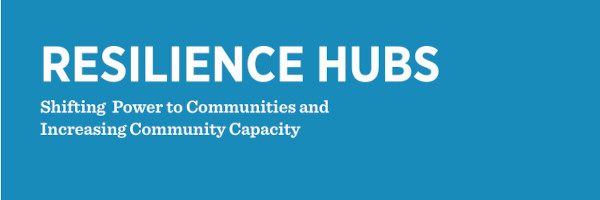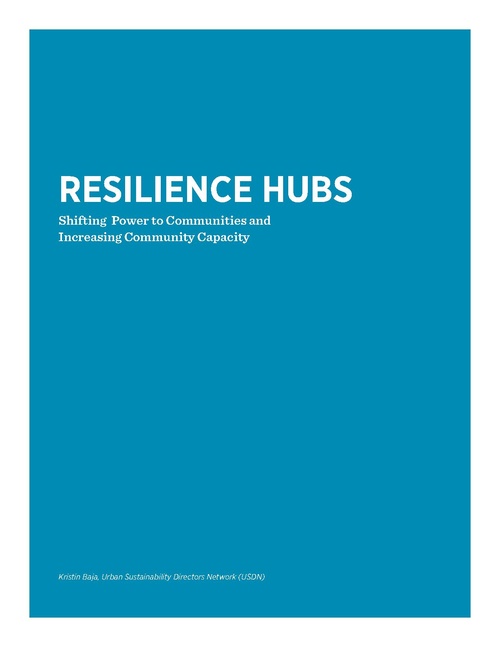Shifting Power to Communities and Increasing Community Capacity: Difference between revisions
Created page with "{{Report |Image=ResilienceHubsShiftingPower.jpg |Published=2018-03-30 |Organization=USDN |poc=Kristin Baja |Where=Baltimore MD |Summary=In all U.S. cities, massive disparities..." |
No edit summary |
||
| Line 8: | Line 8: | ||
|Link=https://www.usdn.org/uploads/cms/documents/usdn_resiliencehubs_2018.pdf | |Link=https://www.usdn.org/uploads/cms/documents/usdn_resiliencehubs_2018.pdf | ||
|sector=Public Safety | |sector=Public Safety | ||
|chapter=Resilience Hubs | |||
|Release=usdn_resiliencehubs_2018.pdf | |||
|Tag=Resilience Hub | |Tag=Resilience Hub | ||
}} | }} | ||
To date, most community resilience work focuses on identifying and managing vulnerability and risk through top-down approaches that often fail to meaningfully include equity-centered strategies considering the most vulnerable populations. These current approaches also often miss opportunities to reduce vulnerability and greenhouse gas (GHG) pollution at the same time, and fail to robustly engage community members in the process of planning and acting to enhance resilience. The USDN Resilience Hub initiative works at the nexus of climate mitigation, adaptation, and equity to enhance and improve community sustainability and resilience through a bottom-up approach centered on community co-development and leadership. | To date, most community resilience work focuses on identifying and managing vulnerability and risk through top-down approaches that often fail to meaningfully include equity-centered strategies considering the most vulnerable populations. These current approaches also often miss opportunities to reduce vulnerability and greenhouse gas (GHG) pollution at the same time, and fail to robustly engage community members in the process of planning and acting to enhance resilience. The USDN Resilience Hub initiative works at the nexus of climate mitigation, adaptation, and equity to enhance and improve community sustainability and resilience through a bottom-up approach centered on community co-development and leadership. | ||
Latest revision as of 05:36, January 17, 2023
| Report | |
|---|---|
| Image | 
|
| Published | 2018-03-30 |
| Point(s) of Contact | Kristin Baja |
| Organization(s) | USDN |
| Where | Baltimore MD |

| |
In all U.S. cities, massive disparities exist between people and neighborhoods. Communities of color and lower income communities sufer disproportionate impacts of climate change and yet are often the last communities supported in the event of an emergency. These communities also generally have less access to resources to respond and recover. Achieving community resilience requires equitably supporting all members of the community, and prioritizing those who experience greater risk to their homes, their jobs, their communities, and their health.
To date, most community resilience work focuses on identifying and managing vulnerability and risk through top-down approaches that often fail to meaningfully include equity-centered strategies considering the most vulnerable populations. These current approaches also often miss opportunities to reduce vulnerability and greenhouse gas (GHG) pollution at the same time, and fail to robustly engage community members in the process of planning and acting to enhance resilience. The USDN Resilience Hub initiative works at the nexus of climate mitigation, adaptation, and equity to enhance and improve community sustainability and resilience through a bottom-up approach centered on community co-development and leadership.